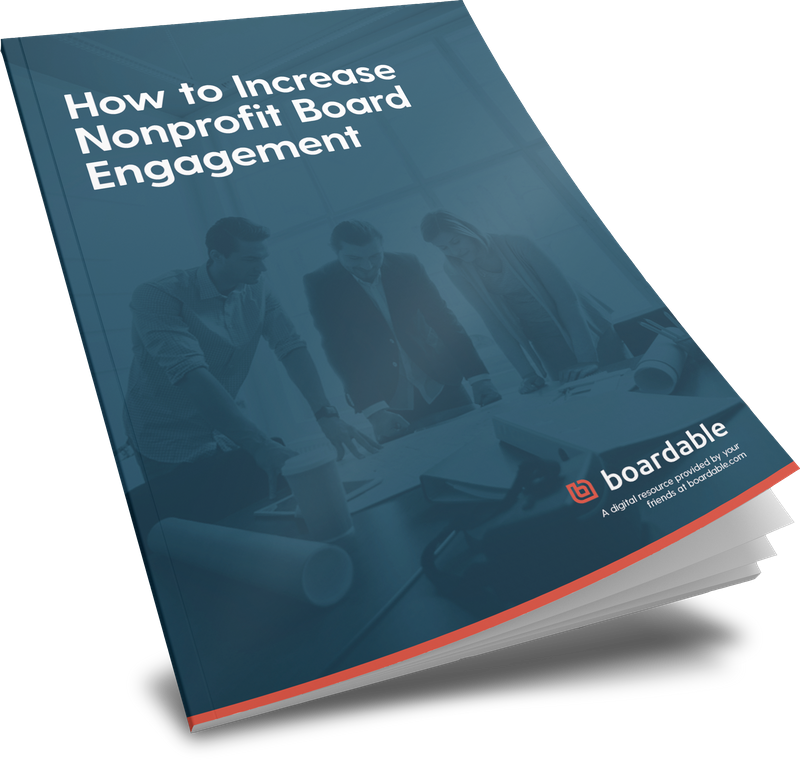Generative AI:
A Guide for Enterprises

Table of Contents.
An Introduction: What is Generative AI? What are the Benefits of Generative AI for Enterprises? What are the Challenges of Generative AI? Enterprise Use Cases of Generative AI Google Cloud Platform and Generative AI Case studies of Generative AI Applications built on the Google Cloud Platform Final Thoughts: Get Started With the Future, Now! 10. Cost Optimisation in Cloud App Development Pioneering Cloud App Excellence with Google Cloud PlatformThe force that is generative artificial intelligence (AI) continues apace, now making its way into almost every facet of modern life.
And with its capability to complement and supplement humans & their day-to-day tasks, it’s changing the enterprise world forever.
This guide is a deep dive into the centre of the Gen AI universe; a look at what’s possible, how it can be harnessed, how organisations can stay on its good side, and what it means for the future.
Let’s jump in.
An Introduction: What is Generative AI?
Artificial intelligence isn’t a new concept, per se. AI systems have helped us speed up processes, automate repetitive tasks and much more within the workplace (and society at large). At a basic level, AI exists to solve a specific problem.
But Generative AI has a broader purpose; to take existing data and provide an output in the form of content. That content can be text, imagery, video, audio or synthetic data.
ChatGPT has quickly cemented itself as the de facto market leader with Google Bard in hot pursuit, but there are other platforms like Midjourney and DALL-E making waves in the Gen AI world too.
How Does Generative AI Work?
Like most technological advancements, the base premise of Gen AI is relatively simple: you provide an input (a prompt), and you’re given an output.
Beneath the surface, though, is where it gets really interesting. Gen AI focuses on creating models and systems capable of generating new content or data that is similar to what humans produce. This is done by training machine learning algorithms to understand patterns in existing data and then using that knowledge to generate new, original content.
These models learn from large datasets and try to capture the underlying patterns and structures present in the data. They can then use that data to generate new examples that resemble the training data in terms of style, format, or characteristics.
What are the Different Types of Generative AI?
Generative AI systems are trained on large datasets of existing content, and they learn to generate new content that is similar to the content they were trained on.
There are many different types of generative AI, each of which is capable of generating different types of content. Here are some of the most common types of generative AI:
- Text generation: Generative text models can generate text of any kind, including news articles, poems, code, scripts, musical pieces, email, letters, etc. Some popular generative text models include GPT-3, Jurassic-1 Jumbo, and LaMDA. Google products and services that use generative text include Google Search, Google Translate, and Google Assistant.
- Image generation: Generative image models can generate images of any kind, including realistic images of people, places, and things. Some popular generative image models include DALL-E 2, Imagen, and Parti. Google products and services that use generative image models include Google Photos and Google Arts & Culture.
- Speech generation: Generative speech models can generate speech of any kind, including realistic human-sounding speech. Some popular generative speech models include Tacotron 2, WaveNet, and Parallel WaveNet. Google products and services that use generative speech models include Google Translate, Google Text-to-Speech, and Google Cloud Text-to-Speech.
- Music generation: Generative music models can generate music of any kind, including realistic human-created music. Some popular generative music models include Jukebox, MuseNet, and AudioML. Google products and services that use generative music models include YouTube Music and Google Cloud AudioML.
- Code generation: Generative code models can generate code of any kind, including realistic human-written code. Some popular generative code models include AlphaCode, Codex, and GitHub Copilot. Google products and services that use generative code models include Google Cloud CodeSearch and Google Cloud Endpoints.
These are just a few examples of Generative AI techniques, and there are many variations and combinations of these approaches. Each technique has its strengths and weaknesses, and the chosen one depends on the specific task and the type of data being generated.
What are the Benefits of Generative AI for Enterprises?

You’ve no doubt heard the horror stories that AI will put us all out of jobs and eventually existence. Instead of a threat, we’re confident that Gen AI can be an asset. That’s because it offers several benefits for businesses and enterprises, including:
- Efficiency: Generative AI can automate and streamline various processes, saving time and effort. It can generate content, designs, or solutions quickly and efficiently, reducing the need for manual labour and repetitive tasks.
- Accuracy: Generative AI models can be trained on vast amounts of data, enabling them to generate highly accurate outputs. They can learn patterns and structures in data to produce precise and reliable results, reducing human errors and improving overall accuracy.
- Automation: Generative AI enables the automation of tasks that previously required human intervention. It can automatically generate content, design layouts, or even generate code, freeing up human resources to focus on more complex and strategic tasks.
- Optimisation: Generative AI can assist in optimising processes and systems. It can generate alternative solutions or designs, allowing businesses to explore different possibilities and find optimal configurations for maximum efficiency and performance.
- Cost Reduction: By automating tasks and improving efficiency, Generative AI can help reduce operational costs. It can eliminate the need for manual labour, lower the time required for certain processes, and minimise resource wastage, resulting in cost savings for businesses.
- Personalisation: Generative AI can create personalised experiences for customers. It can generate customised recommendations, designs, or products based on individual preferences and characteristics, enhancing customer satisfaction and engagement.
- Creativity and Innovation: Generative AI fosters creativity and innovation by generating new and unique content. It can inspire new ideas, designs, and concepts that may not have been considered before, driving innovation within a business and helping it stay competitive.
Think of AI as an assistant rather than a rival, and you’ll soon be able to harness its undoubted power.
What are the Challenges of Generative AI?
That said, there are some issues to be wary of. Here are a few of the potential challenges that AI may throw up in a business environment.
- Security: Generative AI can be vulnerable to attacks and misuse. Adversarial attacks can manipulate the generated content to deceive systems or exploit vulnerabilities. Ensuring the security and integrity of Generative AI models is crucial to prevent malicious activities.
- Intellectual Property (IP): Generative AI raises concerns regarding intellectual property rights. Who owns the generated content? Determining ownership and protecting intellectual property rights can be complex when AI systems generate original outputs.
- Social Responsibility: Generative AI has the potential to generate content that can be socially and ethically problematic. AI systems should be developed with a strong emphasis on social responsibility, considering potential biases, stereotypes, or harmful outputs that could negatively impact individuals or communities.
- Toxicity and Bias: Generative AI models can inadvertently learn biases present in the training data. If the training data contains biases, the generated outputs may perpetuate or amplify those biases, leading to unfair or discriminatory outcomes. Addressing and mitigating bias in Generative AI is a significant challenge.
- Regulation: The rapid advancement of Generative AI has outpaced regulatory frameworks. There is a need for robust regulations and guidelines to address ethical, legal, and privacy concerns associated with Generative AI technologies. Balancing innovation and accountability is crucial to ensure responsible and ethical use. ChatGPT has already seen a temporary ban in Italy, with Chinese authorities also rolling out rules for its use.
- Misinformation: Generative AI can be exploited to generate realistic-looking fake content, including deepfakes or misinformation. This poses challenges for ensuring the authenticity and reliability of information in the digital age, potentially leading to trust issues and societal implications. There’s also the danger of algorithms being fed incorrect data, which can in turn lead to the generation of content based on inaccurate information.
Addressing these challenges requires a multidisciplinary approach, so enterprises may wish to involve experts from various fields, including AI researchers, ethicists, policymakers, and legal professionals.
Striving for transparency, accountability, and responsible development practices can help mitigate these challenges and ensure the responsible use of Generative AI technologies.
Enterprise Use Cases of Generative AI

Given the extraordinary breadth of its capabilities, it comes as no surprise that AI can be leveraged in pretty much any industry. Here are a few examples of where Generative AI can be (and in some cases, already is being) used as a force for good.
Creative Industries
Perhaps the most obvious path for AI is into the creative industries (even though there has been some resistance).
- Art and Design: Generative AI can assist artists and designers in creating new and unique artwork, generating novel designs, or exploring creative possibilities.
- Music and Composition: AI models can generate music compositions, assist in creating harmonies, melodies, or even generate lyrics. You may have seen that Sir Paul McCartney has used AI to complete a “final” Beatles song!
- Gaming: Generative AI can create virtual worlds, characters, and landscapes, enhancing the gaming experience with dynamic and unique content.
Healthcare Industry
Healthcare and pharmaceutical organisations can also benefit from advancements in AI technology.
- Medical Imaging: Generative AI can help in medical imaging tasks, such as generating high-resolution images, enhancing image quality, or reconstructing 3D models from 2D scans.
- Drug Discovery: Generative AI can aid in the discovery of new drugs by generating novel molecular structures, predicting properties, or optimising drug candidates.
- Synthetic Data Generation: Generative AI can create synthetic patient data for training and testing healthcare algorithms while preserving privacy and confidentiality.
Financial Industry
AI also has potential benefits for the financial sector.
- Fraud Detection: Generative AI can identify patterns and anomalies in financial data to detect fraudulent activities, such as credit card fraud or money laundering.
- Risk Assessment: AI models can generate simulations and scenarios to assess financial risks, aid in portfolio management, or assist in making investment decisions.
- Algorithmic Trading: Generative AI can generate trading signals, forecast market trends, and optimise trading strategies for financial institutions.
Manufacturing Industry
In manufacturing, Generative AI may be used to positive effect.
- Product Design: AI can generate design alternatives based on specific constraints or preferences, helping in the creation of optimised and innovative product designs.
- Process Optimisation: Generative AI can analyse manufacturing processes, identify bottlenecks, and generate optimised solutions to improve efficiency, reduce costs, or enhance product quality.
- Quality Control: AI can generate synthetic data for training models that can detect defects or anomalies in manufacturing processes, facilitating automated quality control.
Retail Industry
Another sector that can profit from Generative AI is retail.
- Personalised Recommendations: Generative AI can generate personalised recommendations for customers based on their preferences, browsing history, and purchase behaviour, improving customer engagement and satisfaction.
- Virtual Try-On: AI can create virtual try-on experiences, allowing customers to virtually try on clothing, accessories, or cosmetics before making a purchase decision.
- Visual Merchandising: Generative AI can assist in generating appealing visual displays, store layouts, or product placements to enhance the overall shopping experience.
These are just a few examples of the diverse applications of Generative AI across different industries. The technology holds immense potential to drive innovation, improve processes, and create unique experiences in various sectors.
Google Cloud Platform and Generative AI
Google Cloud Platform (GCP) provides a robust set of services that can be leveraged to build Generative AI applications. Here's how GCP can be used and the advantages it offers for enterprises:
Cloud AutoML
GCP's Cloud AutoML allows you to train custom Generative AI models even if you don’t have expertise in machine learning. It provides a user-friendly interface and automated workflows, enabling your enterprise to build and deploy its generative models quickly and efficiently.
The advantage of using GCP's Cloud AutoML is that it removes many of the complexities of model training and deployment, making it accessible to a wider range of users within your enterprise.
Cloud Natural Language
The Cloud Natural Language service offers powerful text analysis capabilities, including sentiment analysis, entity recognition, and syntax analysis. For Generative AI applications involving text, this service can be used to understand and process the input data, enabling your enterprise to extract valuable insights and generate relevant content.
The benefit of GCP's Cloud Natural Language is its accuracy in interpreting and understanding natural language, which can enhance the quality and reliability of Generative AI outputs.
Cloud Vision
GCP's Cloud Vision service provides advanced image analysis capabilities, such as object recognition, image classification, and content moderation. It can be used in Generative AI applications to process and understand images, enabling enterprises to generate content or make decisions based on visual data.
Its accuracy and reliability in image analysis, ensuring high-quality Generative AI outputs and facilitating tasks such as content generation, image recognition, or visual search can make it a powerful tool for your business.
Cloud Text-to-Speech
GCP's Cloud Text-to-Speech service converts text into natural-sounding speech. This service is valuable for Generative AI applications involving speech synthesis, voice assistants, or audio content generation.
Its high-quality and customisable voices can enhance user experiences and enable enterprises to create engaging and personalised audio content.
Cloud Speech-to-Text
On the flip side, GCP's Cloud Speech-to-Text service transcribes audio into text. It can be used in Generative AI applications involving speech recognition, transcription, or analysis. It is extremely accurate in converting spoken language into text, enabling you to process and analyse audio data efficiently and effectively.
Vertex AI
Vertex AI is a managed machine learning platform that provides a unified experience for building, deploying, and managing Generative AI models. With Vertex AI, you can:
- Build faster: Vertex AI provides a variety of pre-built machine learning models and tools that can be used to build custom Generative AI models quickly and easily.
- Deploy anywhere: Mmodels can be deployed to a variety of cloud environments, including Google Cloud Platform, Amazon Web Services, and Microsoft Azure.
- Manage easily: Vertex AI provides a unified experience for managing Gen AI models, including monitoring model performance, retraining models, and troubleshooting issues.
DuetAI
DuetAI is a tool that helps businesses collaborate with Google AI experts to build and deploy custom Generative AI models:
- Accelerate projects: DuetAI can help you accelerate your Gen AI projects by providing you with the expertise and resources you need to build and deploy custom quickly and easily.
- Improve quality: DuetAI can also help improve the quality of your Gen AI models by providing access to Google AI's best practices and expertise.
PaLM
PaLM is a large language model (LLM) that can be used for a variety of tasks, including generating text, translating languages, writing different kinds of creative content, and answering questions in an informative way. PaLM is one of the most advanced LLMs in the world, and it is trained on a massive dataset of text and code.
Some of the use cases include:
- Generate high-quality text: PaLM can be used to generate text that is indistinguishable from human-written text, making it ideal for applications such as content generation, creative writing, and translation.
- Answer questions comprehensively: PaLM can be used to answer questions in a comprehensive and informative way, even if they are open-ended, challenging, or strange. This makes it ideal for applications such as customer service, education, and research.
- Develop new products and services: It can be used to develop new products and services by providing the ability to generate new ideas and solutions. For example, PaLM can be used to generate new marketing campaigns, product ideas, or customer service scripts.
In terms of enterprise benefits, Google Cloud Platform prioritises data accuracy, security, and privacy. GCP ensures that the data used within these Generative AI services is processed accurately, leading to reliable outputs.
Additionally, Google has extensive measures in place to safeguard data and maintain strict privacy standards, assuring enterprises of data security and confidentiality. GCP's compliance certifications and robust infrastructure further enhance its suitability for enterprise applications, providing a reliable and scalable platform for Generative AI solutions.
Case studies of Generative AI Applications built on the Google Cloud Platform
Early adopters are already making headway with Gen AI’s capabilities. Here are a few enterprises looking to improve their operations through AI and the Google Cloud Platform.
UKG Aims to Equip Leaders With Better Decision-Making
UKG, a leading HR and payroll software provider, has announced plans to integrate Google's Generative AI capabilities into its human capital management suites.
By combining Google's large language models with UKG's existing AI, the company aims to create more powerful insights to help leaders make better decisions about managing teams and to provide employees with more relevant, conversational interactions.
UKG will leverage Google's Vertex AI platform to build new applications for unified search and conversational AI.
Wendy’s Automates the Drive-Thru Experience
Wendy's - one of the most loved takeout joints in the US - is piloting an AI-powered drive-thru ordering system called Wendy's FreshAI. The technology uses Google's Generative AI and large language models to have natural conversations with customers, understand customisable orders, and answer frequently asked questions.
The technology is designed to streamline the drive-thru experience, and by leveraging Google's AI capabilities, Wendy's aims to simplify the ordering process so employees can focus on food quality and customer service.
eDreams ODIGEO Looks to Personalise Travel Recommendations With AI-Powered Agents
Online travel company eDreams ODIGEO is partnering with Google Cloud to pioneer new developments in Generative AI for the travel industry.
eDreams ODIGEO will combine its own AI capabilities with Google's large language models through Vertex AI to further innovate and enhance customer experiences. The company plans to develop AI-powered agents that interact with customers in natural language to provide personalised travel recommendations and bookings as well as resolve complex customer inquiries faster. The company sees significant potential in using Generative AI and Google's foundation models to streamline processes and reimagine traveller engagements on one of Europe's largest e-commerce platforms.
Final Thoughts: Get Started With the Future, Now!
Generative AI holds immense promise for the future, offering exciting possibilities in various industries and creative domains. As AI technology continues to advance, generative models are becoming increasingly sophisticated, enabling the creation of realistic and innovative content. From generating art, music, and virtual environments to aiding in healthcare, finance, and manufacturing, Generative AI has the potential to revolutionise how we create, innovate, and solve complex problems.
Ancoris, as a cloud transformation and Google Cloud Platform (GCP) partner, can support your organisation in its Generative AI initiatives. We can provide expertise in leveraging GCP's AI services, such as AutoML Vision, Natural Language, Vision API, and more, to develop Generative AI solutions tailored to specific business needs.
We can assist in architecting, implementing, and deploying Generative AI models on GCP, ensuring scalability, reliability, and security. We can also provide training and guidance to your organisation, helping you unlock the potential of Generative AI in your operations while being aware of and avoiding the potential pitfalls.
As the field of Generative AI continues to evolve, businesses need to stay updated with the latest advancements and explore how these technologies can drive innovation, efficiency, and personalisation within their respective industries.
With the right knowledge, tools, and support, organisations can harness the power of Generative AI to unlock new possibilities and gain a competitive edge in the future.
Tomorrow is here.
Think Big. Start Now.
10. Cost Optimisation in Cloud App Development
In cloud app development, cost optimisation stands as both guardian and guide. It's the art of balancing the app's architecture with the pragmatism of budget-conscious decisions.
Here are some key considerations:
- Resource utilisation: Optimising cloud resources ensures that you use exactly what you need, when you need it.
- Scaling: Cost optimisation ensures that as your app scales up its performance, it doesn't rack up unnecessary costs.
- Performance-cost equilibrium: Cost optimisation ensures that performance and efficiency are intertwined.
Google Cloud's Strategies and Tools for Cost Optimisation
Google Cloud again comes into its own as far as budget considerations and cost optimisation are concerned, with the following advantages:
- Compute efficiency: Google Cloud's tools and features, such as rightsizing instances and leveraging Spot VM instances (virtual machines), allow you to extract maximum performance from each computational unit.
- Serverless advantage: Embracing serverless execution models on Google Cloud enables automatic scaling based on demand, driving costs down by ensuring you only pay for exactly what is consumed.
- Smart data management: Utilising Google Cloud's intelligent data storage options, such as tiered storage and lifecycle management, lets you optimise storage costs while maintaining accessibility.
Alongside Google’s in-built tools and systems, it also pays to be prudent with your own monitoring to ensure cost control. Here are some quick tips:
- Set budget alerts: Setting budget alarms ensures you're alerted when costs approach thresholds.
- Performance monitoring: Regularly monitoring performance against costs helps you strike the perfect balance between efficiency and expenditure.
- Automated scaling: Utilising Google Cloud's auto-scaling features ensures that resources are allocated as needed, helping you avoid unnecessary over-provisioning.
As you master the cost-saving strategies on Google Cloud Platform, your cloud-based applications become more efficient and innovative.
Pioneering Cloud App Excellence with Google Cloud Platform
For crafting innovative, scalable, and future-ready cloud-based applications, Google Cloud Platform is the place.
So, whether you're venturing into the cloud app development landscape for the first time or seeking to enhance your existing apps, the stage is set. Reach out to Ancoris for assistance in bringing your cloud app vision to life with our expert guidance.
Navigate

Think big. Start now.
We don’t believe in Innovation, we live it. Innovation combined with pragmatism is what runs through our veins. We ask ourselves the same question over and over again: Does it deliver value? And how quickly? Your big ambitions can start now.